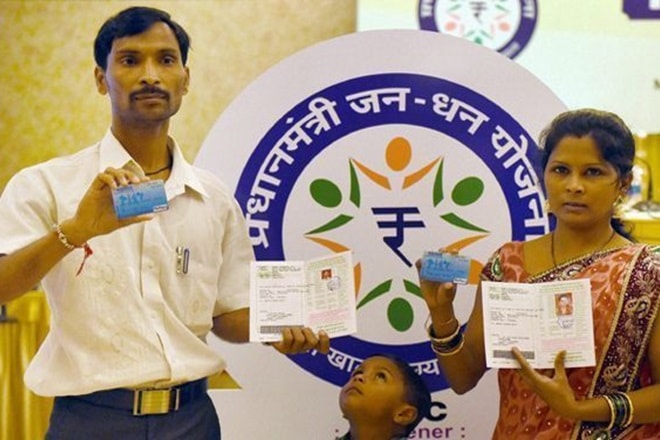Nine years and eight months since its launch, the balance in the Jan Dhan Yojana accounts is nudging the Rs 2-trillion mark, with nearly 486 million beneficiaries of these non-frills accounts at the end of last financial year, according to official data.
Official sources said the continued growth in Jan Dhan deposits – around 8% in FY23 – is proof of the scheme’s efficacy as a tool for financial inclusion.
To be precise, the Jan Dhan accounts had Rs 1.95 trillion as on March 22.
The JAM Trinity – Jan dhan, Aadhaar, mobile – has stood the government in good stead in implementing large-scale, technology-enabled and real-time direct benefit transfers (DBTs) to improve economic lives of the low-income people, the sources added.
Transfer of assorted subsidies and sops to the beneficiaries through DBT resulted in savings of `2.73 trillion between FY15 and FY21.
The progress in financial inclusion is also corroborated by recent data released as part of the Multiple Indicator Survey 2020-21, which revealed that nearly 90% of people in the country had an account individually or jointly in any bank, other financial institutions or mobile money service provider.
At an all-India level, 89.4% of people aged 18 years and above had such an account. There was no sharp rural-urban divide in this. Among the persons of age 18 years and above, about 89.3% of persons in rural areas and about 89.6% in urban areas had such an account. The MIS was conducted by the NSSO as part of efforts to monitor the progress under the sustainable development goals at a national level.
The PMJDY was launched as a National Mission on Financial Inclusion on August 15, 2014, with the aim to increase banking penetration, promote financial inclusion and to provide at least one bank account per household across the country.
The rate of growth in deposits in these accounts has slowed from the initial years, but the growth in Jan Dhan deposits was a creditable 17.5% in FY23, up from 14.5% in FY22. It took a little less than three years to move from `1 trillion in deposits to `2 trillion. It took about six years from the launch of the scheme for the total balance in these accounts to touch `1 trillion in July 2019. The total number of beneficiaries under the scheme at that time was 360.6 million.
The usage of these accounts has also steadily risen and about 85% of the Jan Dhan accounts are understood to be operative while the remaining are inactive and there are also many accounts that are duplicate.
According to the latest data, 328.8 million RuPay debit cards have been issued to account holders. About 66.7% of the beneficiaries or 323.9 million have accounts in semi-urban and rural areas while the remaining 161.8 million have accounts in urban metro centre bank branches.
Significantly, more women also now seem to have access to banking channels. As many as 270 million accounts or 55% of the total PMJDY accounts opened are of women beneficiaries. This is slightly higher than the MIS conducted by the NSSO that showed that 92.4% of men having accounts as against 86.3% of women having such accounts.
Public sector banks have done the major share of the work under the scheme with 60% of beneficiaries or 381.5 million accounts opened with them. They also have about three fourths of the deposits at a little over `1.5 trillion.
“There is a dichotomy in what the government says and does. While it wants to privatise public sector banks, it is these banks that have done opened the greatest number of bank accounts. The government must do more to strengthen public sector banks,” said CH Venkatachalam, general secretary, All India Bank Employees’ Association. However, there needs to be more focus on opening branches in unbanked areas and not just depending on bank mitras and correspondents, he stressed.
Concerns over possible diversion of funds by third parties into PMJDY accounts were also raised by Venkatachalam. “There have been complaints that PMJDY accounts have been used as a conduit by some people. Whether such money was pumped in, especially during demonetisation needs to be investigated,” he stressed.
Under the scheme, one basic savings bank account is opened for unbanked person and there is no requirement to maintain any minimum balance. Rupay Debit card is provided to PMJDY account holder, accident insurance cover of Rs 1 lakh as well as an overdraft facility to eligible account holders. PMJDY accounts are eligible for DBT, government’s insurance schemes – PM Jeevan Jyoti Bima Yojana and PM Suraksha Bima Yojana as well as Atal Pension Yojana and Mudra scheme.

